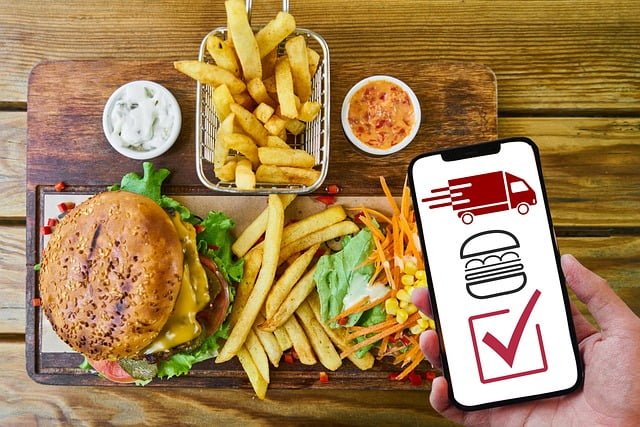
Ecommerce
Table of Contents
Mastering Internet Marketing and Ecommerce: A Comprehensive Guide
Introduction
In today’s digital era, understanding internet marketing and ecommerce is essential for aspiring business professionals. These concepts have transformed the way businesses operate, making it crucial for students to grasp their applications and implications. This comprehensive guide aims to define internet marketing and electronic commerce, differentiate them from traditional commerce, explore various business models in electronic commerce, identify products suitable for ecommerce, and outline the key information to gather from clients when building an electronic commerce website.

Understanding Internet Marketing and Ecommerce
Internet marketing encompasses a wide range of strategies and techniques to promote products or services online. For example, businesses may use search engine optimization (SEO) to improve their website’s visibility in search engine results pages (SERPs), increasing organic traffic. Social media marketing involves using platforms like Facebook, Instagram, and Twitter to engage with customers, build brand awareness, and drive website traffic. Email marketing allows businesses to communicate directly with customers, sending personalized messages, promotions, and updates. Search engine marketing (SEM) involves paid advertising to appear in search engine results, driving immediate traffic to a website.
Electronic commerce, on the other hand, has transformed the way businesses sell products and services. Online retailers like Amazon and eBay have created vast marketplaces where consumers can browse and purchase goods from around the world. Brick-and-mortar stores have also embraced ecommerce, offering online shopping options to reach a wider audience. For example, traditional retailers like Walmart and Target have robust electronic commerce platforms that complement their physical stores, providing customers with convenient shopping experiences.
Together, internet marketing and ecommerce have revolutionized the business landscape, offering businesses unprecedented reach and accessibility. Businesses of all sizes can now reach global audiences and operate 24/7, breaking down geographical barriers and opening up new opportunities for growth and expansion. By leveraging the power of Internet marketing and ecommerce, businesses can connect with customers in new and innovative ways, driving sales and building brand loyalty.

Differentiating Traditional Commerce and Ecommerce
Traditional commerce revolves around physical interactions between buyers and sellers, often occurring in brick-and-mortar stores or through face-to-face transactions. In this model, customers visit stores, browse products, and make purchases in person. This approach offers a personalized shopping experience and immediate product gratification. However, traditional commerce is constrained by geographical boundaries and operating hours, limiting its reach and accessibility.
Ecommerce, on the other hand, has transformed the business landscape by leveraging the internet. Electronic commerce eliminates the need for physical storefronts, enabling businesses to sell products and services online. This digital approach offers numerous advantages, including global reach, 24/7 availability, and reduced overhead costs. Ecommerce encompasses various business models, including Business to Consumer (B2C), Business to Business (B2B), Consumer to Consumer (C2C), and Consumer to Business (C2B), each catering to different market dynamics and consumer needs.
| Aspect | Traditional Commerce | E-commerce |
| Interactions | Physical, face-to-face | Digital, online |
| Operating Hours | Limited by store hours | 24/7 availability |
| Geographic Reach | Local or regional | Global |
| Overhead Costs | High (physical stores, staff, utilities) | Lower (no need for physical stores, reduced staffing) |
| Customer Interaction | Personalized, immediate gratification | Often requires shipping, but offers convenience |
| Business Models | Mainly B2C, some B2B | B2C, B2B, C2C, C2B |
| Customer Experience | In-store experience, ability to see and touch products | Online browsing, virtual try-ons (where applicable) |
| Examples | Local shops, supermarkets, malls | Amazon, eBay, Shopify, online banking and services |

Exploring Business Models and Strategies in Ecommerce
Electronic commerce encompasses several traditional business models, each tailored to different market dynamics and consumer needs. The most common models include Business to Consumer (B2C), Business to Business (B2B), Consumer to Consumer (C2C), and Consumer to Business (C2B). Additionally, several strategies can be used within these models to enhance ecommerce operations and customer engagement.
Common Business Models
- Business to Consumer (B2C): This model involves businesses selling products or services directly to consumers. An example in the Philippines is Lazada, an online shopping platform offering a wide range of products from electronics to fashion items. B2C companies focus on creating seamless online shopping experiences to attract and retain customers.
- Business to Business (B2B): In the B2B model, businesses sell products or services to other businesses. An example is UnionBank GlobalLinker, a platform that connects businesses to suppliers and buyers. B2B transactions often involve larger order volumes and longer sales cycles compared to B2C transactions.
- Consumer to Consumer (C2C): C2C electronic commerce involves consumers selling products or services to other consumers. An example is Carousell, a platform where individuals can buy and sell a variety of goods. C2C platforms provide individuals with a platform to buy and sell goods directly to each other, facilitating peer-to-peer transactions.
- Consumer to Business (C2B): In the C2B model, consumers sell their products or services to businesses. An example is freelance platforms like Freelancer.ph, where individuals offer their skills and services to businesses. C2B allows businesses to tap into the skills and resources of individual consumers, offering a unique value proposition.

Strategies
- Dropshipping: Dropshipping is a retail fulfillment method where a store doesn’t keep the products it sells in stock. An example in the Philippines is Shoplus, a dropshipping platform that integrates with ecommerce stores. The seller doesn’t handle the product directly, reducing inventory costs and logistical challenges.
- Subscription Model: This model offers products or services to customers on a recurring basis for a subscription fee. An example is BeautyMNL’s BeautyBox, a subscription service for beauty products. The subscription model provides businesses with predictable revenue streams and fosters customer loyalty.
- Crowdfunding: Crowdfunding is a method used by entrepreneurs to raise funds for a project or product. An example is The Spark Project, a crowdfunding platform for creative projects in the Philippines. Crowdfunding can be used by ecommerce businesses to fund the development of new products or projects.
- Affiliate Marketing: Affiliate marketing involves partnering with other businesses or individuals (affiliates) to promote products or services in exchange for a commission on sales. An example is Zalora’s affiliate program, where individuals can earn commissions by promoting Zalora products. This strategy can help ecommerce businesses expand their reach and drive sales through third-party promotion.
- Content Marketing: Content marketing involves creating and sharing valuable, relevant content to attract and engage a target audience. An example is Globe myBusiness Academy, which provides educational content for small businesses. This strategy can help electronic commerce businesses build brand awareness and drive traffic to their website.
- Personalization and Customer Segmentation: Ecommerce businesses can use data analytics and customer insights to personalize the shopping experience for individual customers. An example is Shopee’s personalized recommendations based on browsing behavior. By segmenting customers based on their preferences and behavior, businesses can tailor their marketing efforts and product offerings to better meet customer needs.

Identifying Products Suitable for Ecommerce
Electronic commerce offers a wide range of opportunities for businesses to sell products online. While digital products such as software and ebooks are naturally suited for electronic commerce due to their digital nature, physical products can also be successful if they meet certain criteria.
- Size and Weight: Small and lightweight products are well-suited for ecommerce. Examples include accessories like jewelry, watches, and small electronic gadgets like earphones or power banks.
- Durability: Products that are durable and not easily damaged during shipping are ideal. Examples include clothing, shoes, and accessories made from sturdy materials.
- Non-Perishability: Non-perishable items with a long shelf life are suitable for ecommerce. Examples include canned goods, snacks, and household items like cleaning products.
- Market Demand: Products that are in high demand and have a large target market are more likely to be successful online. Examples include trendy fashion items, electronics, and health and wellness products.
- Competitive Pricing: Products that can be competitively priced in the online market are more attractive to customers. Examples include locally-made handicrafts, apparel, and beauty products.
- Ease of Storage: Products that are easy to store and require minimal space are preferable. Examples include compact home and kitchen gadgets, storage solutions, and personal care products.
- Brand Strength: Strong branding and marketing can make a product successful in ecommerce. Examples include popular local brands in fashion, beauty, and food products.
- Adaptability to Online Presentation: Products that can be effectively presented and described online are more suitable. Examples include consumer electronics with detailed specifications, fashion items with clear size guides, and beauty products with before-and-after photos.
By considering these factors and examples, businesses can identify products that are well-suited for ecommerce and capitalize on the growing online market in the Philippines.

Gathering Client Information for Building Ecommerce Websites
Building an electronic commerce website for a client requires a thorough understanding of their business and goals. Gathering comprehensive information is crucial to ensure the website meets their needs and aligns with their branding and marketing strategies. Here are key areas to focus on when gathering client information:
- Business Objectives: Understand the client’s short-term and long-term business goals. This includes their sales targets, expansion plans, and overall business strategy.
- Target Audience: Identify the client’s target market, including demographics, interests, and buying behavior. This information will help tailor the website design and content to appeal to their audience.
- Branding Guidelines: Obtain the client’s branding guidelines, including logos, color schemes, fonts, and brand voice. This will ensure consistency across the website and align with the client’s brand identity.
- Product Catalog: Gather information about the client’s products or services, including descriptions, images, and pricing. Understand the categories and subcategories they want to include in their product catalog.
- Pricing Strategy: Discuss the client’s pricing strategy, including any discounts, promotions, or pricing tiers they plan to offer. This will help determine how products are displayed and priced on the website.
- Shipping and Fulfillment Options: Understand how the client plans to fulfill orders, including shipping methods, delivery times, and shipping costs. This information will impact the checkout process and shipping options available to customers.
- Website Features: Determine the features the client wants on their website, such as product search functionality, user accounts, wish lists, and customer reviews. Also, discuss payment gateways and security measures to ensure safe transactions.
- Mobile Optimization: Confirm if the client wants a mobile-responsive website to ensure it is accessible and user-friendly on mobile devices.
By gathering comprehensive information in these areas, you can build an ecommerce website that meets the client’s needs, aligns with their branding, and helps them achieve their business objectives.

Conclusion
Internet marketing and ecommerce are integral components of modern business practices. By understanding these concepts, you can develop a solid foundation for future careers in business and marketing. This comprehensive guide provides a detailed overview of internet marketing and ecommerce, helping students navigate the complexities of the digital landscape and prepare for success in the ever-evolving business world.

More Stories
- FOOD PRESENTATION IDEAS | THAILAND
- 25 THINGS TO DO IN CAMBODIA | TOURIST SPOTS
- BEST OF THE BESTS: Top Colorful Festivals in the Philippines
- Egg Facial Mask: A Nourishing and Rejuvenating Skincare Treatment
- Mayonnaise Hair Treatment: DIY Bonding Session for Luscious Locks
- Compassion: A Path to Fabulous Living and Lasting Legacies
- Alleged Ceneco Power Outages Sabotage: PWN Raises Concerns
- Talisay City Booth, Panaad Park: Travel Back in Time
- Panaad Park Adventure | Culinary Delights, Himamaylan City
- Negros Power Joins Panaad sa Negros Festival
- Pasalamat Festival Schedule of Events | La Carlota City







